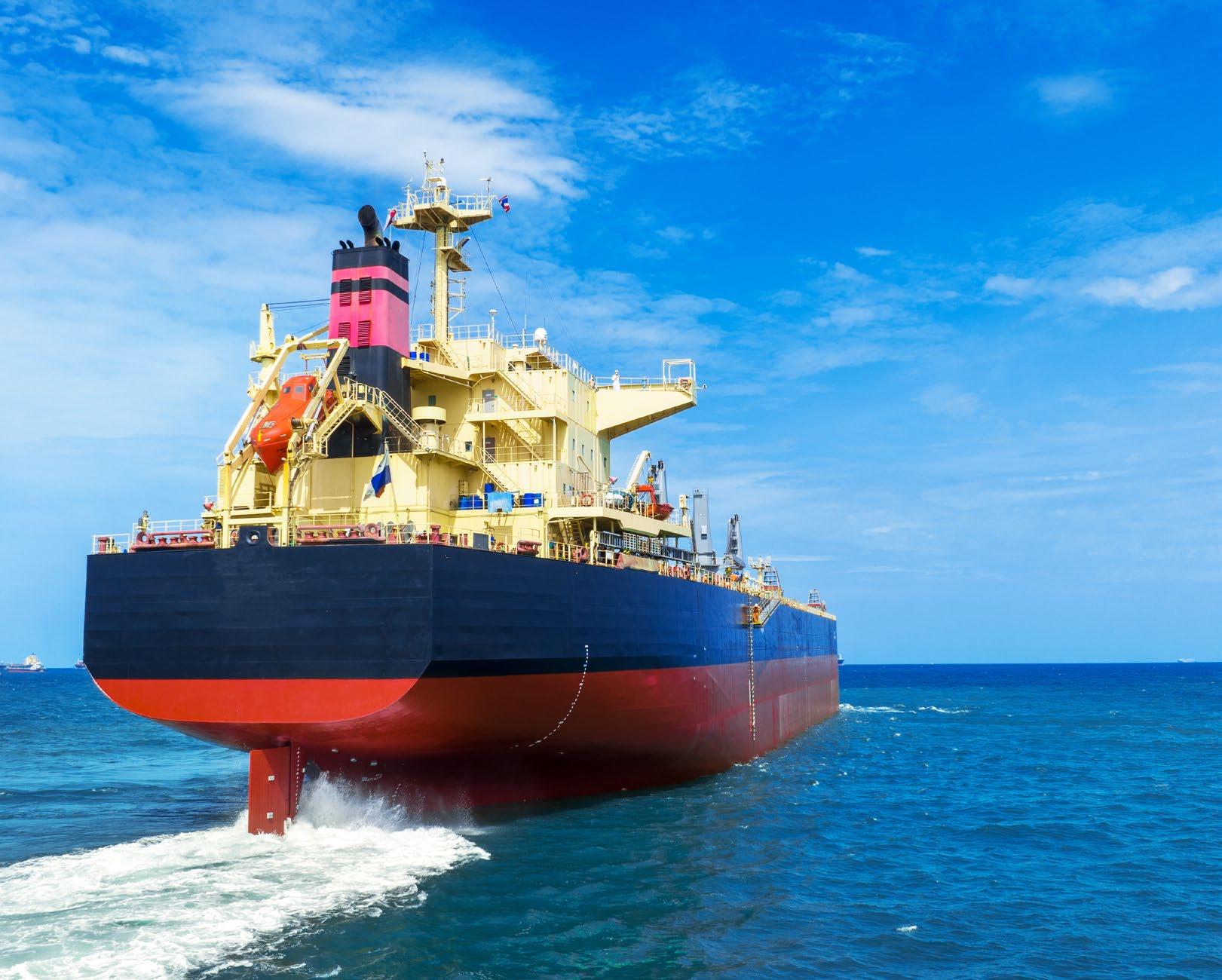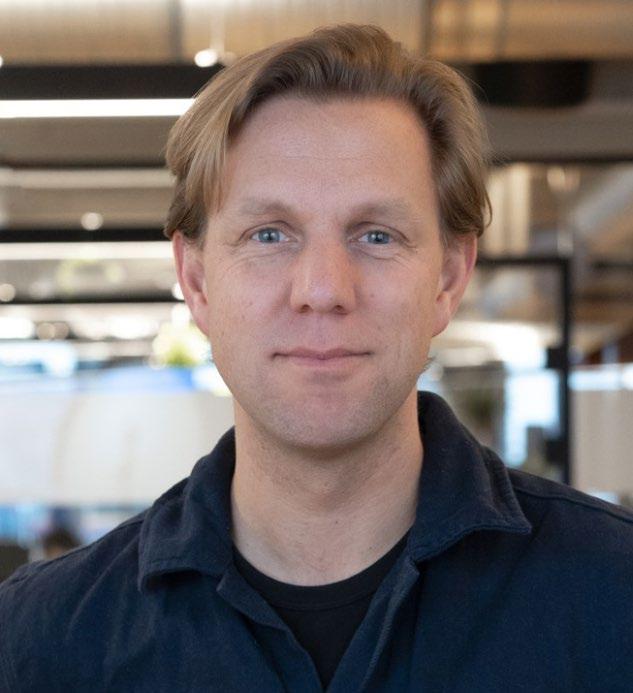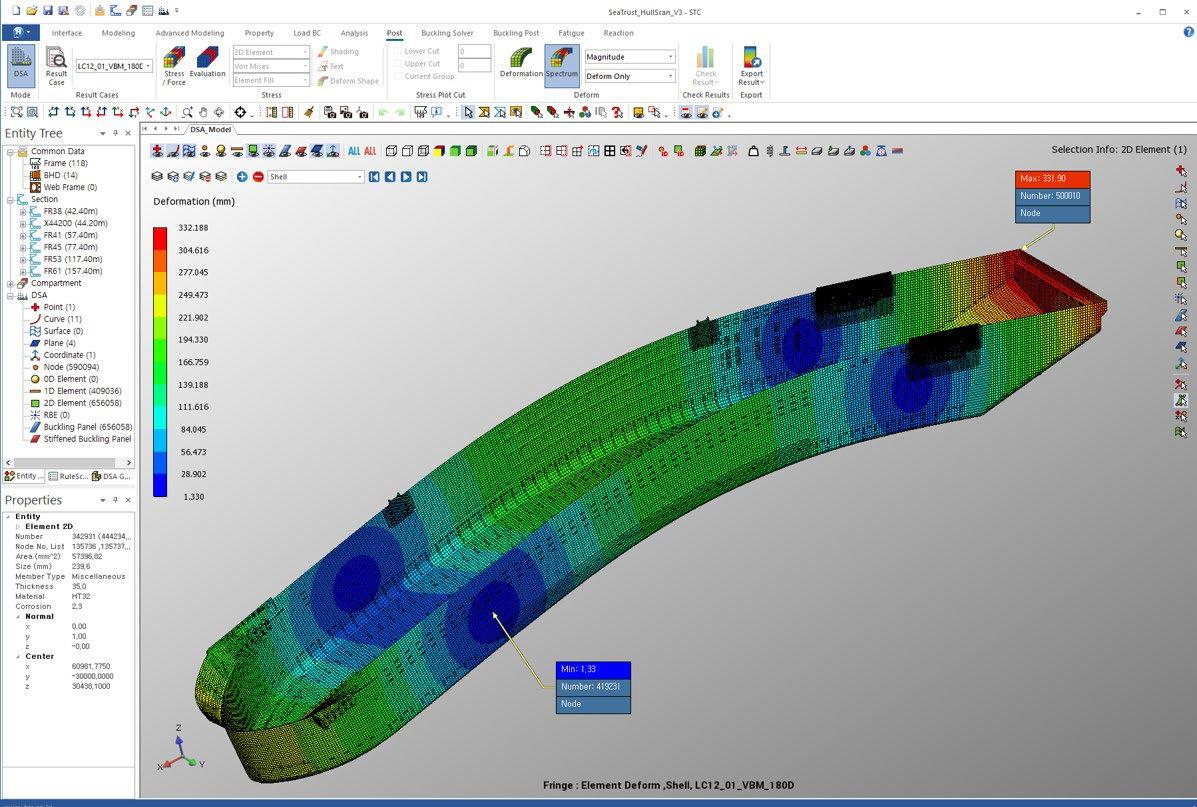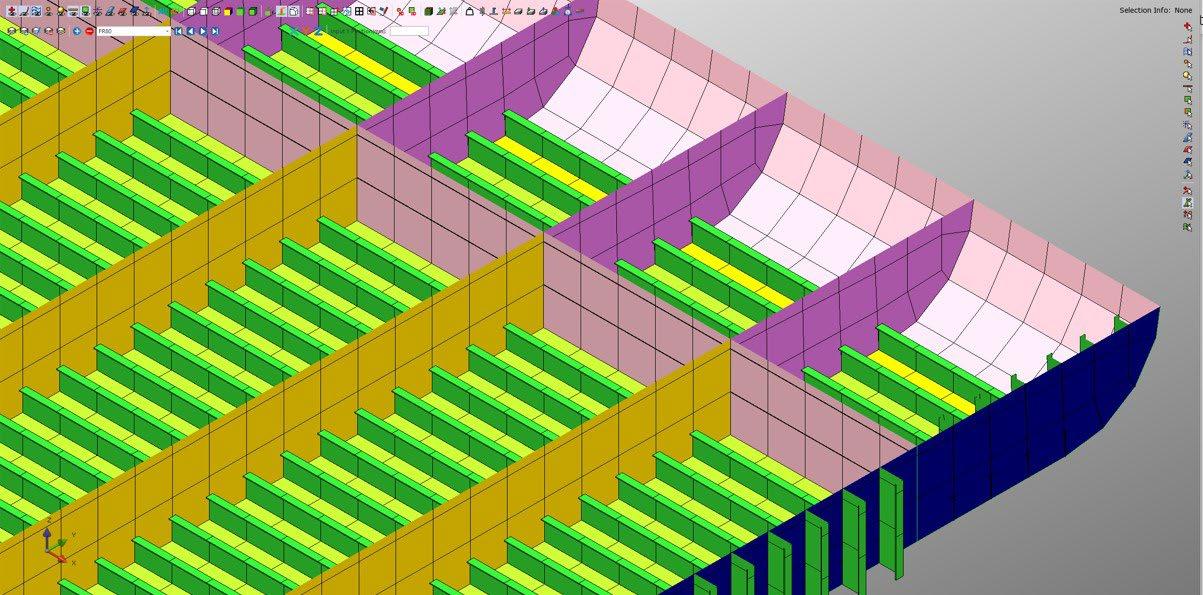
8 minute read
SHIP DESIGN
from CSI Winter 2022
by Maritime-AMC
The need to meet new and forthcoming industry requirements on environmental issues has led to innovations in ship design to improve efficiency and ensure safety when using new fuels
BRAVE
NEW WORLD
Survitec’s Maritime Protection brand has registered a significant increase in orders for inert gas (IG) systems over the past two years following a surge in orders for newbuild vessels with liquefied natural gas (LNG)-burning engines.
This increase is partly attributed to the global shipping industry seeking to meet decarbonisation targets by moving away from high polluting heavy fuel oil towards alternative, cleaner marine fuels.
About 35% of the current world order book accounts for dual-fuelled and gas ships running on either a combination of LNG and conventional fuel or LNG alone. These engines need to be fitted with an inert gas system to prevent the build-up of highly flammable gasses.
Bernt Øhrn, general manager of Maritime Protection, explains: “If the ship doesn’t have any oil or gas cargo tanks, which require a fixed CO2-based system to deal with the higher volume, a small N2 inert gas system is needed to make the fuel system safe.”
Demand for natural gas as a marine fuel is expected to continue over the next 20 years, with the industry viewing the energy source as a vital step towards decarbonisation.
“This is demonstrable in the increased orders for IG,” says Øhrn. “We are a seeing a significant push for alternatively fuelled newbuilds capable of handling the new emissions requirements. But we also see an increase in engine conversions and retrofits, with shipowners converting topsides to accommodate LNG fuel tanks.
“Although LNG only accounts for one in three newbuilds, shipowners of all types are beginning to see the dual-fuel or gas engine as the way forward.” According to Øhrn, analysts predict a 25% increase in orders for dual-fuelled ships in 2023, increasing to 50% by 2025.
“With the need to further reduce the impact of ship operations on the marine environment, the speed of technological development will see the adoption of other alternative fuels, particularly ammonia and hydrogen,” says Øhrn, adding that Survitec
is involved in several industry and university-based research projects investigating ways to make such fuels safe.
Øhrn predicts ammonia will become increasingly important, but will require much larger fuel tanks, while the safety of a hydrogen-fuelled ship is likely to prove a challenge.
“High rates of hydrogen mixing with oxygen can be dangerous,” he says. “We are developing ways of inerting the exhaust side of a hydrogen fuel cell outside the ship. It may not be possible to use nitrogen as this could evaporate on contact with the colder hydrogen, so helium may be the only inert gas we can use. The problem with helium is it’s a scarce resource and expensive.
“We recognise the opportunities and challenges the industry will face in the coming years as significantly increasing numbers of vessels will be built or retrofitted to run on alternative fuels,” says Øhrn. “We are designing solutions to ensure operations remain safe no matter the fuel.”
VESSEL OPTIMISATION
Technology company ZeroNorth has launched its new vessel optimisation service, which will simplify the process of identifying inefficient vessels within a fleet in real time for shipowners and operators.
The vessel optimisation service focuses on two of the industry’s most important performance challenges: hull fouling and auxiliary boiler consumption, ensuring vessels are operated efficiently at sea and in port.
The new service uses data and machine learning to generate actionable insights on how to improve operational procedures and better manage the condition of onboard equipment, enabling owners and operators to reduce fuel consumption and emissions from their fleets and unlock more sustainable, efficient and profitable voyages.
Hull performance is a key area for vessel performance management due to its significant impact on potential excess fuel consumption, which increases emissions and costs. ZeroNorth vessel optimisation modernises traditional approaches for hull monitoring with real-time risk assessment and alerts for long idle periods. The service not only identifies the best time to clean a hull, but also proactively prevents severe fouling due to idle stays.
Efficient utilisation of energy and fuel consumption during daily operations is another critical factor in vessel performance, affecting both costs and environmental impact. ZeroNorth vessel optimisation provides detailed insights into current and past auxiliary generator and boiler consumption to ensure vessels are operating at optimal efficiency levels.
To maximise outputs, the new service integrates with ZeroNorth’s vessel reporting functionality to provide a more holistic approach to reported data management – and particularly noon reports – placing them in an operational context. This makes it easier to detect and address detrimental reporting patterns, which helps to ensure vessel performance is accurately reported, understood and actioned.
Commenting on the service, Pelle Sommansen, ZeroNorth’s chief product and AI officer, says: “Our new vessel optimisation service identifies inefficient vessels and optimises the performance of fleets, solving a huge hurdle for green global trade. The service generates actionable insights to proactively prevent severe hull fouling and better understand auxiliary boiler consumption, enabling more informed, intelligent and sustainable decision-making.
“One of the major challenges when managing and operating large fleets is prioritising inefficient vessels which need attention. Scanning specific insights from a fleet to identify low performers is a tedious process and causes missed potential. ZeroNorth’s vessel optimisation service will provide a complete fleet overview with clear performance indicators, significantly improving vessel performance and ensuring that the global fleet performs optimally, cuts costs and reduces emissions, whether at sea or in port.”

Pelle Sommansen, chief product and AI Officer, ZeroNorth AMMONIA AIP FOR COSCO
Classification society ABS has awarded two approvals in principle (AIP) to COSCO Shipping Heavy Industry and COSCO Shipping Heavy Industry Technology for its ammonia-fuelled vessel and ammonia supply system designs, which are being trialled on a tugboat.
Given the challenging characteristics of ammonia, ABS conducted a comprehensive review and risk assessment focused on ammonia filling, storage, supply, ventilation and emergency handling in the AIP process to address the safety and reliability of the systems.
“Ammonia offers shipowners and operators a zero-carbon, tank-towake emissions profile. Yet, we also recognise that ammonia presents a specific set of safety and technology challenges, and ABS is committed to leading the industry in supporting its safe adoption at sea,” says Georgios Plevrakis, ABS vice president, global sustainability.
“This is the first comprehensive technology research project in China focusing on ammonia burning, ammonia-diesel, dual-fuel engine, ammonia fuel supply system, exhaust gas treatment and onboard application demonstration, which is of great significance and has farreaching impact. In the future, we will continue to pioneer innovation, with the development of green, low-carbon and smart shipping,” says Ji-Jiang Jiang, COSCO Shipping Heavy Industry general manager.
The tugboat is designed to be 36m in length with a towing capacity of up to 60 tons. The ammonia supply system will be part of the vessel, providing ammonia for propulsion.
HULL SCAN SOFTWARE
Korean Register (KR) has released a new version of its popular structural assessment software, SeaTrustHullScan V3, to improve its ability to handle large-capacity graphics and cope with ever more complex ship designs and regulations.
SeaTrust-HullScan V3 performs structural analysis for various types of vessels and marine structures by using FEM (finite element modelling). South Korea’s shipbuilders use SeaTrust-HullScan as a standard software for CSR (common structural rules) applications.
When designing a vessel, structural analysis of the ship must be performed to evaluate its structural strength in advance. One of the popular techniques for structural analysis is FEM, which is used to determine the stress and displacement points by dividing a large structure into numerous finitesized elements.
Along with the growing size of ships and an increasing number of requirements of related regulations in recent years, structural analysis of ships is required to deal with many more finite elements. KR made functional improvements in SeaTrust-HullScan to meet user needs following these changes in the ship design environment.
SeaTrust-HullScan V3 includes world-class level technology for largecapacity graphics that dramatically improves the response and processing speed of millions of finite elements in ship models. In addition, the software features various visualisation functions, enhanced interface with CAD program for ship design and extended application to other types of structure. With new automatic updates also included in the new version, user convenience will also be enhanced.
KIM Daeheon, executive vice president of KR R&D Division, says: “This is a leap forward for our popular software. With vessel design requirements becoming increasingly complex, the need for structural assessment software capable of handling shipyard’s requirements is critical. KR is dedicated to meeting customer needs and further solidifying our role as a trusted provider of technical software.”


SeaTrust-HullScan V3 performs structural analysis for various types of vessels using FEM
WIND GATHERS SPEED
Classification society DNV has released an update to its wind-assisted propulsion systems (WAPS) technical standard (ST-0511). The major update introduces new methods for evaluating WAPS fatigue strength, as well as the performance of the systems in extreme conditions.
WAPS are one of the most promising measures to assist the decarbonisation of shipping today, the class society says.While experience in using the systems is still developing, WAPS have already been implemented on commercial vessels and can enable fuel savings of up to 20%. The new updates to DNV’s technical standard (ST-0511) will support the growing interest in WAP systems.
“As we continue to build experience on WAP systems, and as new systems come on to the market, the case for owners who are looking at these systems as part of their efficiency and sustainability strategies grows stronger,” says Hasso Hoffmeister, senior principal engineer at DNV Maritime.
The interaction of WAPS with the structure of a vessel’s hull can be quite complex, so the update features a comprehensive new section on fatigue strength, including calculations that offer a new approach to derive the load combinations from the wind and inertia forces on WAP systems.
In addition, the standard sets out a new approach to assessing how WAPS perform under extreme wind conditions. Finally, the documentation requirements have been adjusted to streamline the process.
The WAPS ST-0511 standard can be applied in obtaining an approval in principle, a design approval or a type approval.










